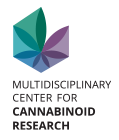Citation:
Abstract:
Cancer is the second cause of death worldwide, exceeded only by cardiovascular diseases. The prevalent treatment currently used against metastatic cancer is chemotherapy. Among the most studied drugs that inhibit neoplastic cells from acquiring unlimited replicative ability (a hallmark of cancer) are the taxanes. They operate via a unique molecular mechanism affecting mitosis. In this review, we show this mechanism for one of them, paclitaxel, and for other (non-taxanes) anti-mitotic drugs. However, the use of paclitaxel is seriously limited (its bioavailability is <10%) due to several long-standing challenges: its poor water solubility (0.3 μg/mL), its being a substrate for the efflux multidrug transporter P-gp, and, in the case of oral delivery, its first-pass metabolism by certain enzymes. Adequate delivery methods are therefore required to enhance the anti-tumor activity of paclitaxel. Thus, we have also reviewed drug delivery strategies in light of the various physical, chemical, and enzymatic obstacles facing the (especially oral) delivery of drugs in general and paclitaxel in particular. Among the powerful and versatile platforms that have been developed and achieved unprecedented opportunities as drug carriers, microemulsions might have great potential for this aim. This is due to properties such as thermodynamic stability (leading to long shelf-life), increased drug solubilization, and ease of preparation and administration. In this review, we define microemulsions and nanoemulsions, analyze their pertinent properties, and review the results of several drug delivery carriers based on these systems. © 2018 Elsevier B.V.
Notes:
cited By 26
